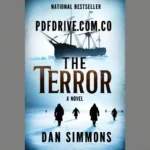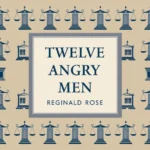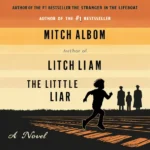John Steinbeck’s “Grapes of Wrath PDF” stands as a testament to the enduring human spirit amidst adversity, offering a poignant portrayal of the American experience during the Great Depression. Set against the backdrop of the Dust Bowl era, Steinbeck’s masterpiece continues to captivate readers with its compelling narrative and timeless themes.
| Name of PDF | Grapes of Wrath PDF |
|---|---|
| No of Pages | 313 |
| Author | John Steinbeck’s |
| Originally Published | 14 April 1939 |
| Language | English |
| Genres Characters | Historical Fiction, Domestic Fiction, Political fiction Tom Joad, Casy, Ma Joad, Pa Joad, Tío John Joad |
| Size | 1.17 MB |
| Chek, latest edition |
Table of Contents
Introduction to “Grapes of Wrath PDF”
In 1939, John Steinbeck unleashed “Grapes of Wrath” onto the literary landscape, a novel that would come to define an era. Set during the Dust Bowl migration of the 1930s, the book follows the arduous journey of the Joad family as they flee the dust-ravaged fields of Oklahoma in search of a better life in California.
More Historical Fiction Novels Of Mice and Men PDF

Plot Summary
The narrative unfolds as the Joads, displaced from their farm by economic hardship and environmental devastation, embark on a treacherous journey westward. Along the way, they encounter a multitude of challenges, from exploitation by wealthy landowners to the harsh realities of migrant labor camps. Despite facing unimaginable hardships, the family clings to hope and resilience as they strive for a brighter future.
Characters
At the heart of “Grapes of Wrath” are the richly drawn characters who populate Steinbeck’s world. From the stoic patriarch Tom Joad to the fiercely protective Ma Joad, each member of the family grapples with their own struggles and desires. The enigmatic preacher Jim Casy provides spiritual guidance, while Rose of Sharon symbolizes both innocence and maternal strength.
Setting
Steinbeck’s vivid depiction of the Dust Bowl landscape serves as a stark backdrop to the Joads’ odyssey. Against the backdrop of dust storms and barren fields, the author captures the harsh realities of rural poverty and agricultural collapse during the Great Depression.
Symbolism and Themes
Throughout “Grapes of Wrath,” Steinbeck weaves a tapestry of symbolism and themes that resonate with readers to this day. The grapes, a recurring motif, symbolize both abundance and exploitation, while the journey itself becomes a metaphor for the quest for justice and dignity in the face of adversity.
Author’s Style
Steinbeck’s prose is marked by its simplicity and lyricism, capturing the rhythms of everyday speech while imbuing his narrative with profound emotional depth. His unflinching portrayal of human suffering and resilience has earned him a place among the literary giants of the 20th century.
Criticisms and Controversies
Upon its release, “Grapes of Wrath” sparked both acclaim and controversy, with some critics decrying its socialist themes and graphic depiction of poverty. Yet, over the years, the novel has come to be recognized as a powerful indictment of social injustice and a timeless exploration of the human condition.
Cultural Impact
Steinbeck’s magnum opus has left an indelible mark on American literature and popular culture, inspiring numerous adaptations in film, theater, and music. Its themes of solidarity and resistance continue to resonate with readers around the world, cementing its status as a classic of modern literature.
The final rains of Oklahoma did not sever the scarred earth, but rather fell gently on the red country and a portion of the gray country. The plows traversed the rivulet marks once and again. The final downpours swiftly lifted the corn and dispersed grass and weed colonies beside the roads, causing the dark red and gray areas to gradually blend into the surrounding greenery.
About Book: Grapes of Wrath PDF Book Read Now by John Steinbeck
The sky turned pale in the latter part of May, and the clouds that had hung in lofty puffs throughout the spring began to break up. Day by day, the sun blazed down on the corn, which was now sprouting leaves, until each green bayonet had a brown stripe running along its edge. The clouds materialized, vanished, and eventually they stopped attempting.
In an attempt to defend themselves, the weeds turned a darker green, and they stopped spreading. The earth’s surface formed a thin, hard crust; the earth turned pink in the red country and white in the gray country as the sky grew progressively lighter. The earth dusted down in dry little streams in the gullies cut by water. Little avalanches were initiated by gophers and ant lions.
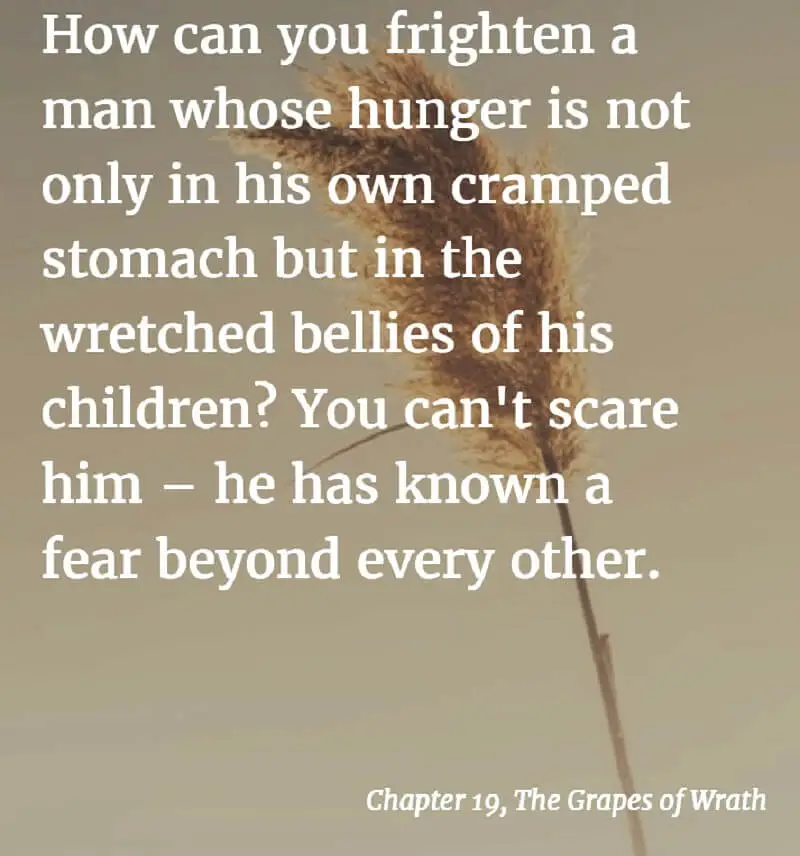
And the young corn’s leaves grew less stiff and upright with each passing day as the strong sun shone; initially, they bent in a curve, but eventually, as the strength of the central ribs weakened, each leaf tipped downward. Then June arrived, with the sun beaming even brighter. On the central ribs of the corn leaves, the brown lines grew wider and closer together. Weeds tattered and retreated towards their roots. The earth became paler every day, and the sky became even more pale. The air was thin.
The dirt crust broke and dust formed on the roads where the teams traveled, where the wheels ground the surface and the horses’ hooves pounded it. Every moving object raised the dust into the air: a wagon raised the dust as high as the fence tops, a walking man raised a thin layer as high as his waist, and an automobile boiled a cloud behind it. It took a while for the dust to settle once more. By mid-June, the heavy, tall clouds with rainheads began to move up from Texas and the Gulf.
The men in the fields lifted their wet fingers to feel the wind, sniffed, and looked up at the clouds. And with the clouds in the sky, the horses were uneasy. Grapes of Wrath PDF Book Read Now With a little splattering, the rainheads rushed to another nation. The sun flared, and the sky turned pale once more behind them. There were clean splashes on the corn and drop craters in the dust where the rain had fallen. That was all.
The rain clouds were driven northward by a gentle wind that caressed the drying corn with a gentle clash. After a day, the wind continued to grow steadily and without interruption. The road dust blew up and dispersed, landing on the weeds next to the fields and descending somewhat into them. The wind has picked up strength and force now, working at the corn fields’ rain crust.
Gradually, the dust began to blend into the sky, and the wind blew across the land, dislodging the dust and taking it with it. The wind picked up in intensity. Grapes of Wrath PDF Book Read Now The rain crust cracked, and dust rose from the fields, sending gray plumes, resembling lazy smoke, skyward. There was a dry, rushing sound as the corn threshed the wind. The finest dust vanished into the lowering dusk rather than returning to Earth.
As it blew across the fields, the wind got stronger and carried small clods, old leaves, and straws up to mark its path. It also whisked away stones. The sun glowed red through the darkening sky and air, and the air itself felt raw with stinging. Over the course of a night, the wind picked up more speed over the land and cleverly buried itself between the corn’s rootlets. The corn used its weakened leaves to fight off the wind until the wind forced the roots free, at which point each stalk wearyly settled sideways toward the earth and pointed in the direction of the wind.
Dawn arrived, but it was not a day. A red sun emerged in the gray sky, a faint red circle that radiated a little light akin to dusk. As the day wore on, the dusk turned back into darkness, and the wind howled and whimpered over the corn that had fallen. Men and women huddled together in their homes, covering their noses with handkerchiefs when they went outside, and wearing goggles to protect their eyes.
When night fell once more, it was pitch-black because neither the stars nor the window lights could shine through the dust to the stars’ own yards. At this point, the dust and air had blended together uniformly to form an emulsion. Houses were tightly closed, with cloth tucked around windows and doors; however, dust was blown in so thinly that it was invisible in the atmosphere, landing like pollen on dishes, chairs, and tables.
The individuals shrugged it off their shoulders. Dust was arranged in small lines at the door sills. The wind moved on, and the land became quiet in the middle of that night. The air is heavy with dust, which attenuates sound even more than fog does. Grapes of Wrath book PDF The wind stopped, and the people, still in their beds, heard it. When the rushing wind had subsided, they awoke. They lay in silence, listening to the silence. Then the roosters began to crow, muffling their voices, and the people in their beds grew restless, wanting morning.
They were aware that it would take a while for the dust to disappear from the atmosphere. The sun was as red as ripe new blood in the morning, and the dust hung like fog. The dust descended from the sky throughout the day and continued to do so the following day. The earth was blanketed in evenness. It landed on the corn, piled high atop the fence posts, heaped upon the wires; it covered the trees and weeds and settled on roofs.
When the people emerged from their homes, they covered their noses to protect them from the hot, stinging air. And the children emerged from the houses, but unlike what one might expect after a downpour, they did not run or yell. Grapes of Wrath book PDF Men stood by their fences, staring at the ruined corn that was rapidly drying out and showing only a hint of green through the layer of dust. The men moved slowly and without much speech.
The women emerged from their homes to stand by their husbands, curious to see if the men would give in at this time. The corn could go as long as something else remained, so the women studied the men’s faces in private. The kids were drawing figures in the dust with their bare toes while standing close by, and they were sending out their exploring senses to see if the men and women would break.
The kids looked at the faces of the men and women, then used their toes to carefully draw lines in the dust. To get rid of the dust on the surface, horses approached the watering troughs and nuzzled the water. Grapes of Wrath book PDF The men’s faces, once bewildered and perplexed, eventually hardened into angry, resistant expressions.
The women then realized there was no break, and they were safe. Next, they inquired, “What will we do?” The men said, “I don’t know,” in response. However, everything was OK. Both the women and the children who were observing understood that everything would be okay. Deep down, women and children knew that, as long as their men were whole, no hardship was too much to bear.
The children started to play, but cautiously at first, while the women went inside to finish their tasks. The sun grew less red as the day went on. It burst upon the dust-dusted terrain. The men were sitting in the doorways of their homes, fiddling with small rocks and sticks. The men sat motionless, gazing, calculating.
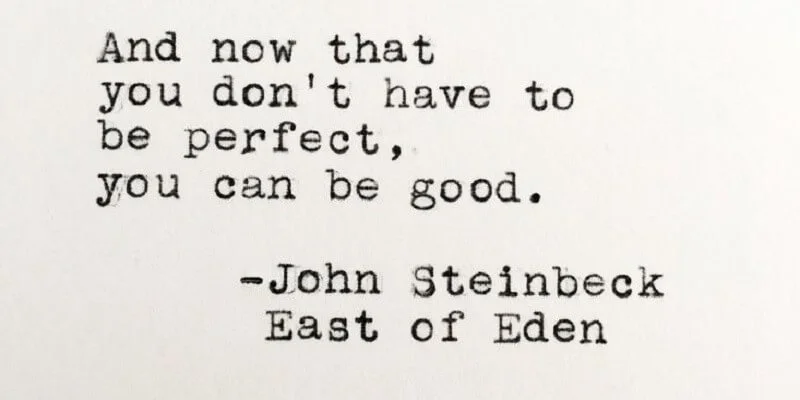
Conclusion to Grapes of Wrath book summary
In “Grapes of Wrath PDF,” John Steinbeck invites readers on a journey of hardship and hope, reminding us of the enduring power of the human spirit in the face of adversity. Through its vivid characters, evocative setting, and timeless themes, the novel stands as a testament to the resilience of the human soul and the quest for justice in an unjust world.
John Steinbeck’s American realist book, The Grapes of Wrath, was released in 1939. In addition to winning the Pulitzer Prize for fiction and the National Book Award, the book was heavily referenced when Steinbeck was given the 1962 Nobel Prize in Literature. Wikipedia
FAQs about Grapes of Wrath book online
Is “Grapes of Wrath PDF” based on a true story?
While the Joad family is fictional, the novel is inspired by real events and the experiences of Dust Bowl migrants during the Great Depression.
How did “Grapes of Wrath PDF” impact society?
The novel shed light on the plight of migrant workers and helped to galvanize support for labor rights and social reform.
What challenges did John Steinbeck face in writing “Grapes of Wrath PDF”?
Steinbeck encountered resistance from publishers and faced censorship due to the novel’s political themes and depiction of poverty.
What are some key themes in “Grapes of Wrath PDF”?
Themes of social justice, family, resilience, and the pursuit of the American Dream are central to the novel.
Why is “Grapes of Wrath PDF” considered a classic?
Its enduring relevance, powerful storytelling, and profound exploration of human nature have secured its place in the literary canon.
What is the saying, Grapes of Wrath PDF?
a biblical allusion, or reference, to the Book of Revelation, passage 14:19–20,
What are the last lines of The Grapes of Wrath?
She looked up and across the barn, and her lips came together and smiled mysteriously.
What are the symbols in the grapes of wrath?
blood, the Joads’ dog, and the Dustbowl.
What are the family quotes in Grapes of Wrath?
All we got was the family unbroken
What is the life lesson of The Grapes of Wrath?
people need to band together to help each other out
What is the first line of The Grapes of Wrath?
She looked up and across the barn, and her lips came together and smiled mysteriously,


